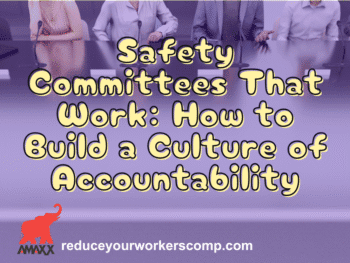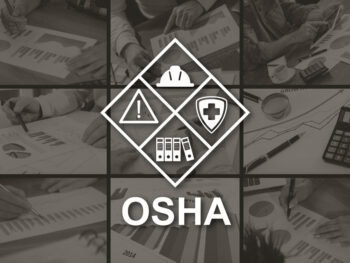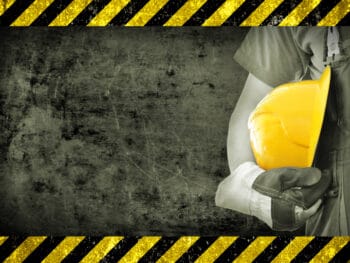The Occupational Safety and Health Administration (OSHA) is a creation of the federal government to ensure a “safe and healthful working conditions for working men and women by setting and enforcing standards and by providing training, outreach, education, and assistance.” It has a significant impact on workers’ compensation claims in terms of workplace safety and injury prevention. Given its role, it is important for employers and other interested stakeholders to know how to respond to workplace safety inspections and post-injury response.
This post is one in a 3-part series:
Understanding OSHA Basics
OSHA’s jurisdictions cover nearly every workplace and job site regardless of size or function. In terms of safety, they have the ability to inspect the workplace randomly or following a complaint that merits action. Common conditions that result in violation include the following:
- Falls from heights and failure to implement requires fall protection systems;
- Scaffolding and other elevated structures;
- Use or manufacture of hazardous materials; and
- Machinery and implementation or use of required safety guards.
Click Link to Access Free PDF Download
“4-Step Sequence For Effective Employee Screening, Hiring, & Placement”
The federal act also allows states to create their own OSHA programs. This act allows states to develop their own standards, provided they meet the federal minimums required under the Act. There are currently 22 OSHA approved programs that include: Alaska, Arizona, California, Hawaii, Indiana, Iowa, Kentucky, Maryland, Michigan, Minnesota, Nevada, New Mexico, North Carolina, Oregon, Puerto Rico, South Carolina, Tennessee, Utah, Vermont, Virginia, Washington, and Wyoming.
Given their role, OSHA can undertake programmed or unprogrammed inspections. “Programmed inspections” are those that involve enforcement of rules and regulations and occur on a regular basis. Inspections that are considered “unprogrammed,” are those that involved an employee complaint, identified imminent danger, or catastrophe.
Regardless of the type of inspection, it is important to prepare and know how to respond.
Knock, Knock – Who’s There? OSHA!
It is important to courteous and professional anytime you are working with someone from a government agency. An OSHA inspector is required to provide you with their identification and state the reason for their inspection. The nature of the visit should also be provided. Make sure everyone knows the process and procedure when someone arrives.
A typical OSHA inspection follows the following process:
- Opening Conference: The purpose of this conference is to review documentation related to the site visit and determine what areas are going to be inspected. It is important to be professional and understand the basis for the site review. Important trade secrets may be disclosed during this process. Have the inspector sign a non-disclosure agreement, if applicable.
- Walk-Around: This portion of the visit will include a review of the physical workplace, job site, or area of specified concern. An employer representative should always be with the OSHA inspector. Parameters of the inspection should be defined so interaction with employees can be limited. If the inspector takes a sample or measurement of something, it is important to verify the accuracy of the process. Document, document, document – and listen to what the inspector is saying.
- Interview: A site inspection may also include an interview with employees. These should be monitored. Statements made by a supervisor or someone in authority are attributable to the employer. Interviews with general employees can be done in private. Always consult with an attorney if there is doubt.
- Closing Conference: This will typically occur at the conclusion of the walk around and interview(s). The inspector will discuss their findings and possible courses of action. Listen to what is being said and do not argue.
- Post-Closing/Penalties: Violations always require remedy and remediation. It may also include a penalty assessment. The consequences of a violation generally increase with the frequency and/or severity of the offense. There is a legal process to challenges any penalty.
It is important to remember that penalties can create an opportunity to better workplace safety and morale. Federal and state OSHA programs also provide employers with the chance to have inspectors to come in and review workplace conditions without the threat of penalty or sanction. If utilizing this method of review, renumeration is compulsory, and failure to make proper changes with result in fines.
Conclusions
OSHA plays an important role in making our workplaces safe. It is important for employers and other interested stakeholders to know how to respond to an inspection. The net result is reduced chances of workplace injury, and a safer work environment.

Contact: mstack@reduceyourworkerscomp.com.
Workers’ Comp Roundup Blog: https://blog.reduceyourworkerscomp.com/
©2019 Amaxx LLC. All rights reserved under International Copyright Law.
Do not use this information without independent verification. All state laws vary. You should consult with your insurance broker, attorney, or qualified professional.
















